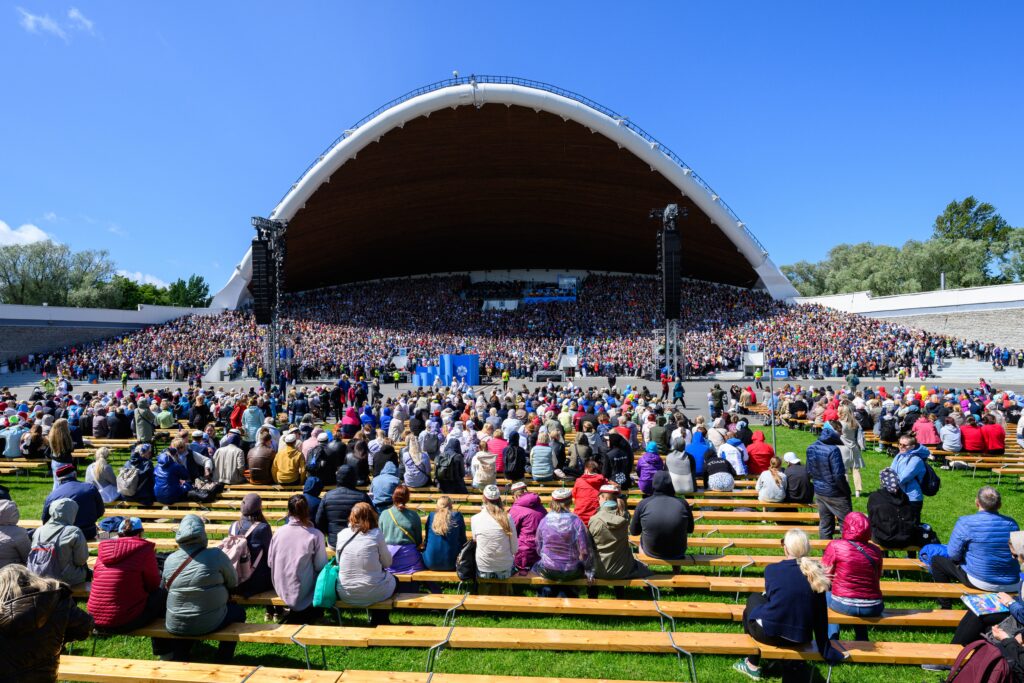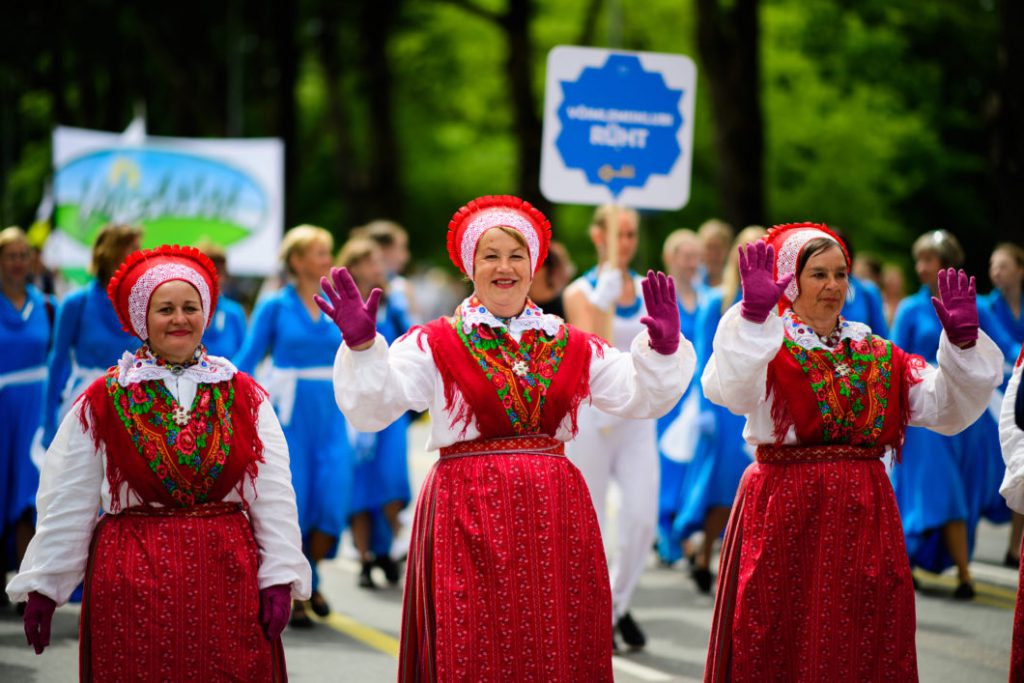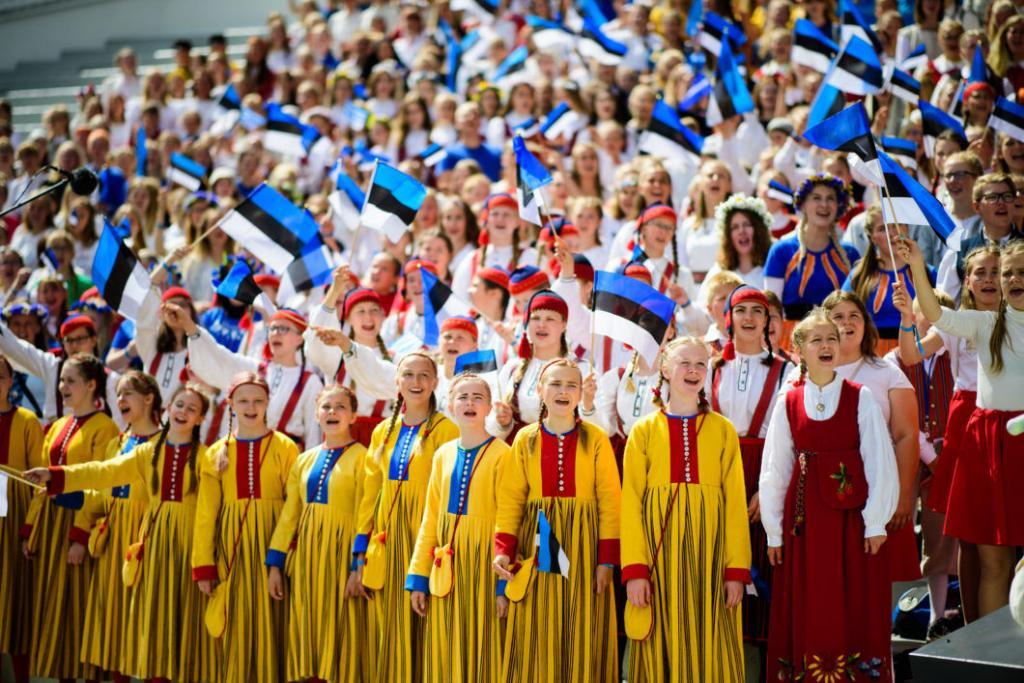When the ceremonial flame is lit beneath Tallinn’s iconic Song Arch on 5 July, it will signal the return of one of Europe’s most remarkable cultural gatherings: Estonia’s Song Celebration.
Held every five years, this event is no ordinary festival. It is a profound expression of national character, where music, language and memory converge. For a small country long familiar with the forces of occupation and upheaval, it is a public declaration of cultural continuity – and a joyful assertion of who Estonians are.
This year, more than 32,000 singers, including 1,500 performers from 45 international choirs, will take to the stage beneath the soaring shell of the Song Festival Grounds, singing for an audience of 100,000. The theme of the XXVIII Song and XXI Dance Celebration is “Iseoma” – a word that speaks of something deeply personal: authentically ours.
“We shape our own lives and happiness,” writes Heli Jürgenson, the artistic director of the Song Celebration. “We sing our own songs with our own voices… To love our very own Estonia.”
Adding to the significance of this year’s gathering, all three artistic leads – for song, dance, and folk music – are women. It marks a historic first in the event’s 156-year history.

A festival born of resistance and belonging
The Estonian Song Celebration has long carried political as well as artistic significance. It began in 1869, during the national awakening, when choirs offered an oppressed people a way to give voice to their language and heritage. In 1918, that cultural movement contributed to Estonia’s first declaration of independence.
During the Soviet occupation, the tradition endured in spite of censorship. In 1988, tens of thousands sang patriotic songs at the Song Festival Grounds in what became known as the Singing Revolution – an act of collective defiance that played a decisive role in Estonia regaining its sovereignty in 1991.
The stage, then, is not only for performance – it is for history.

Grand procession
The celebrations begin with the grand procession on Saturday, 5 July, when tens of thousands of participants in national costume will parade through the streets of central Tallinn towards the Song Festival Grounds.
The opening concert begins at 7:30PM. The flame will be lit, President Alar Karis will address the crowd, and the united choirs will perform Mihkel Lüdig’s “Koit” and the Estonian national anthem. The programme that follows centres on regional dialects and traditional melodies, including works by Arvo Pärt, Mart Saar, Eduard Tubin, Ester Mägi, Veljo Tormis and others whose compositions form the backbone of Estonia’s choral canon.
The evening will conclude around 11:00PM, although the atmosphere is likely to linger long into the night.

A day-long choral spectacle
On Sunday, 6 July, the main concert begins at 12:30PM, with gates opening at midday. Choirs of pre-school children will open the day, followed by a procession of children’s, boys’, women’s, men’s and mixed choirs – supported by wind ensembles and a full symphony orchestra.
In total, more than 32,000 singers and instrumentalists from 990 ensembles will take part in the Song Celebration. Among them will be 6,000 young performers from choirs of children in grades 1 to 4 (often referred to as young children’s or beginner choirs), 5,300 members of children’s choirs in upper primary grades, and 10,800 mixed-voice singers. They will be led by nearly 800 conductors, bringing to life 40 musical works, ranging from historic pieces to newly composed works.
As tradition dictates, the final performances will feature Estonia’s most cherished choral pieces: Tuljak by Miina Härma, Ta lendab mesipuu poole by Peep Sarapik, and the emotional anthem Mu isamaa on minu arm by Gustav Ernesaks.
“Ta lendab mesipuu poole” performed at the Estonian Song Celebration in 2019.
Tradition meets sustainability
This year’s event places strong emphasis on environmental responsibility. Attendees are encouraged to travel by public transport, bicycle or on foot. Until 6 July, all public transport within Tallinn is free, and Elron trains are also free within city limits. Shuttle buses will ferry guests to and from the venue. Full details, diversions and real-time updates are available via the City of Tallinn’s transport site.
Visitors are asked to minimise movement during performances and to follow waste reduction guidelines in keeping with the event’s sustainability goals.
The Song and Dance Celebration is one of the last great unifying rituals of its kind. While many nations grapple with how to keep folk culture alive in the digital age, Estonia does so with quiet confidence. It does not preserve tradition in amber, but renews it through participation.
And once again, as voices rise beneath the arch and the audience joins in, Estonia will sing not only of its past – but of its future.

